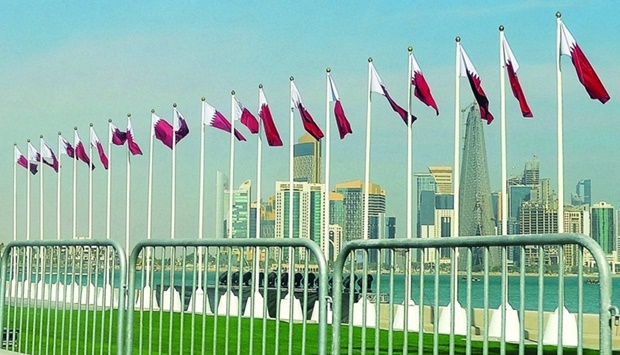Qatar’s assets offset government-related entity (GRE) debt, Fitch Ratings said and noted partial recovery from the Covid-19 pandemic and higher oil prices are lowering GRE debt as a share of GDP across the GCC in 2021.
But in most countries, Fitch Ratings said GRE debt levels remain higher than before the pandemic.
The upward trend in GRE debt/GDP that has been in evidence since 2014 could resume as GREs help to drive national economic agendas, aiming at job creation, diversification and the energy transition, Fitch Ratings said.
Increased focus on privatisation and asset sales could mitigate this trend over time, it said.
Aggregate GCC non-bank GRE debt hit 37% of GDP in 2020 (an increase of 7pp over 2019), driven in part by declines in nominal GDP on lower oil prices and Covid-19-induced recessions. The ratio is 32% in relation to forecast 2021 GDP.
Aggregate debt of GCC government-related banks (wholesale or interbank funding, excluding customer deposits) rose to 24% of GDP in 2020.
However, potential contingent liabilities from banks are larger, with sector assets reaching above 300% in Qatar, for example.
All GCC countries have a record of supporting their GREs, either on an ongoing basis or in periods of distress. The likelihood of future assistance is high given past experience, combined with the continuing importance of GREs to national economic growth strategies and, frequently, their status as national champions.
Across much of the GCC, large sovereign net foreign assets and low net debt limit the credit impact of large or growing contingent liabilities, Fitch Ratings said.
The high standalone credit quality of some GREs, in particular most of the national oil companies in the region, is also a mitigating factor.
Nevertheless, many GCC sovereign ratings rely on exceptional balance-sheet strengths to outweigh structural weaknesses, including undiversified economies and political risk.
Fitch said it does not usually include GRE debt in government debt, unless it is guaranteed and likely to materialise onto a government’s balance sheet.
Contingent liabilities could crystallise if a government assumes the obligations of a GRE, or if it needs to make transfers that widen its fiscal deficit. Other contingent liabilities not covered in this report include liabilities arising from pension funds or public-private partnerships (eg power purchase agreements).
Business / Business
Qatar’s assets offset government-related entity debt; higher oil prices, pandemic recovery lower GCC's GRE debt/GDP: Fitch Ratings

Qatar’s assets offset government-related entity (GRE) debt, Fitch Ratings has said. PICTURE: Shaji Kayamkulam

